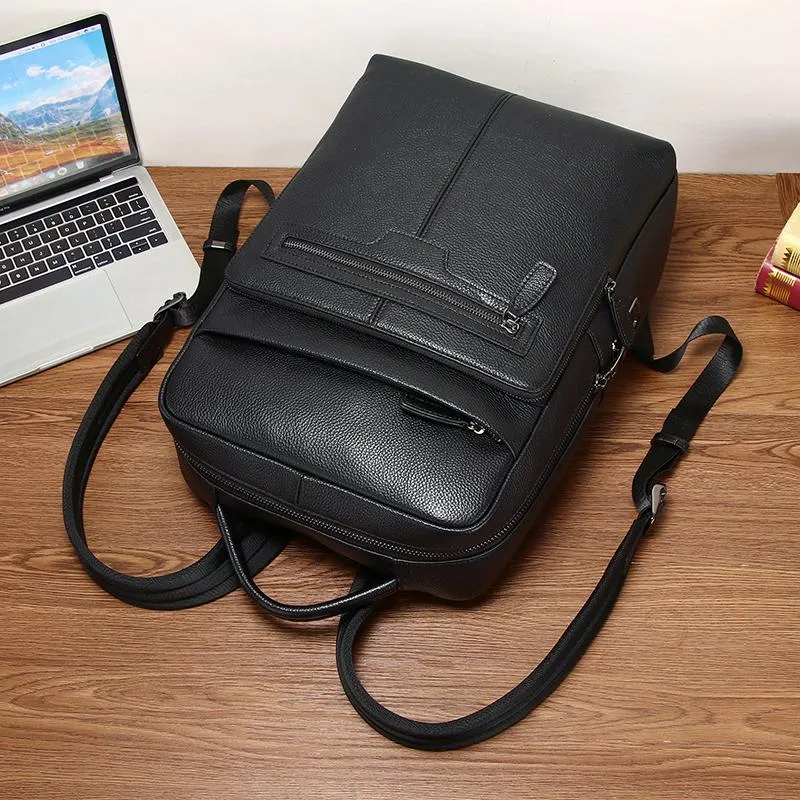In the world of leather, goat leather and cow leather are two commonly used materials, each with its own unique characteristics. Whether you're a leather enthusiast, a designer, or a consumer looking to buy leather products, understanding the differences between goat leather vs cow leather is essential. This article will delve into their texture, strength, and cost, providing a comprehensive comparison to help you make informed decisions.
Goat leather boasts a distinctive texture that sets it apart. Its grain is fine and tight, with small, evenly distributed pores that resemble a pinprick pattern. This fine grain gives goat leather a smooth and supple feel to the touch. When you run your fingers over it, you can sense a certain delicacy, yet there's an underlying resilience. The texture of goat leather remains consistent across the surface, making it ideal for products where a refined appearance is desired.
In contrast, cow leather has a more varied texture. The grain is generally coarser, with larger pores that are more spaced out. Depending on the part of the cow the leather is taken from, the texture can differ. For example, leather from the shoulder area may have a more pronounced grain, while that from the belly might be smoother but with more stretch. Cow leather has a sturdier and more rugged feel compared to goat leather, which adds to its durability and gives it a classic, timeless look.

When it comes to top grain leather vs full grain leather in the context of texture, full grain leather, whether from goat or cow, retains the natural grain and imperfections, which adds to its character. Top grain leather is sanded to remove the outer layer, resulting in a smoother surface but with some loss of the natural texture.
Is goat leather good in terms of strength? Absolutely. Goat leather is known for its high tensile strength. Despite being relatively thin, it is resistant to tearing and abrasion. This strength can be attributed to the tight arrangement of its fibers. Goat leather is flexible, allowing it to withstand repeated bending and folding without easily cracking. It is a great choice for products that require both strength and flexibility, such as gloves, wallets, and small bags that are frequently used and handled.

Cow leather is also highly regarded for its strength, but in a different way. Due to its thicker nature, cow leather offers excellent resistance to wear and tear. It can handle heavy use and is less likely to get damaged from impacts or rough handling. The fibers in cow leather are thicker and more densely packed, contributing to its overall sturdiness. Cow leather is commonly used in products that need to be durable and long - lasting, like large bags, furniture upholstery, and footwear that undergoes a lot of stress.

The cost of goat leather is influenced by several factors. The availability of goats can vary by region, which affects the supply. In areas where goat farming is prevalent, the cost of raw goat hides may be lower. The processing of goat leather also plays a role. Since goat leather has a fine grain, it requires careful processing to maintain its quality, which can add to the production cost. Generally, goat leather is priced in the mid - range, making it a more affordable option than some exotic leathers but slightly more expensive than lower - grade cow leather.
Cow leather is widely available due to the large - scale cattle industry, which helps keep its base cost relatively low. However, the cost can vary significantly depending on the quality. Full grain cow leather, which is the highest quality, is more expensive because it retains the entire grain layer and requires minimal processing. Top grain cow leather is less expensive than full grain but more costly than corrected grain leather, which undergoes more processing to cover up imperfections. Overall, cow leather offers a wide range of price points, from budget - friendly options to high - end, premium varieties.
In the comparison of goat leather vs cow leather, both have their own merits. Goat leather stands out with its fine texture, good flexibility, and decent strength, making it suitable for various accessories. Cow leather, on the other hand, impresses with its rugged texture, high durability, and wide range of price options. So, is goat leather good? It certainly is, especially when you need a leather that combines a refined look with flexibility. When considering top grain leather vs full grain leather, remember that full grain leather preserves more of the natural characteristics, while top grain offers a smoother surface. Whether you choose goat leather or cow leather depends on your specific needs, preferences, and budget for the leather product you have in mind.